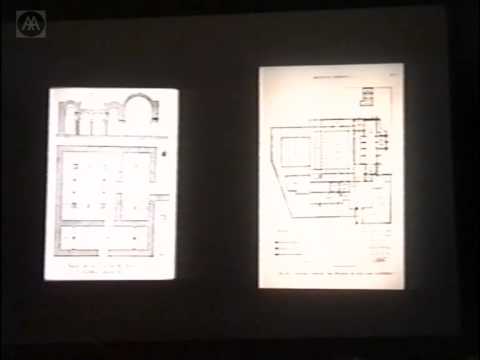
Lecture date: 1996-11-14
John Dennys Memorial Lecture: John Dennys was involved with the AA over a period of 27 years – as a student, lecturer, member of Council, and President. On his death in 1973, a visiting lectureship was established to mark his interest in education. Jos Rafael Moneo identifies fragmentation and minimalism as the guiding principles in today’s architecture. Presenting a selection of his own projects he explores the relationship between the idea of fragmentation and the destruction of repetition. Throughout his career Moneo has demonstrated a tremendous range. His built projects include art museums, residential buildings, a railway station, an airport, factory, hotel, and city hall. As a writer and critic he has devoted almost as much time to education as he has to design. He has taught at the schools of architecture of both Madrid and Barcelona University, and for five years was the chairman of the Department of Architecture at the Harvard GSD. In 1996 he was awarded the Pritzker Prize.
NB: Sound cuts out after 75 mins, lecture cuts out shortly after.
Transcription:
John Dennys Memorial lecture.
Mohsen Mostafavi introduces Rafael Moneo.
RAFAEL MONEO: Let’s start rapidly telling about my gratefulness to Mohsen Mostafavi for inviting me to give this first John Dennys memorial lecture. It is always rewarding to be in london and to be in this school. I am quite aware of how important this school was and is, and therefore to have this opportunity to share with you where my thoughts are and what are the intentions behind my projects is what I will try to do today. I will read first some comments, or statements that will allow me to explain more clearly what I am trying to do with some of my latest works. I brought those works in which I am working at the moment, because they represent, or illustrate better the thesis I’m trying to sustain.
I would say that fragmentation is the most characteristic architectural feature, matched only by an almost symmetrically oriented phenomenon of minimalist expression. Opening any architectural magazine in whatever part of the world, one sees that architects’ interest oscillates between these two poles, either a scattered, broken structure where sharp and pointed planes are committed in an intense dance, ignoring whatever geometrical mandate, or frozen solid mass—with pleasure in a careful handling of the material—does attempting to accomplish all the duties architecture had in the past. It could be said that the scope of recent architecture falls within these two categories, allowing one to speak of fragmentation as the latest expression of organicism, and minimalism as those who have flourished by the sites planted by Mies van der Rohe. two attitudes that without doubt, could be considered as antagonistically opposed and yet bound in what I believe characterizes most of our architecture today in a relentless fear of form. As a matter of fact, form, something that used to be the core of the entire architectural discourse, is censored, and as a result, most of today’s architecture is dictated by these two main trends fragmentation and minimalism which I will try to examine very briefly now, keeping in mind that some alternative is still possible, and that is the territory in which I will like to move. I realize that fragmentation is too broad a concept. I am also aware of how appealing fragmented vision is, when sciences are unable to establish the unitarian model to look at nature and when society stretches more and more towards a diversity, which makes inevitable reference to a fragmented, broken world. Fragmentation is for us a formal metaphor to describe the reality around us and therefore, seeing things in such a way, one would be tempted to say that the fragmented architecture mirrors today’s world, falling once more in this inescapable trap of the third gaze to justify our world. I would like to carry the issue a bit further and to remind you today when and how fragmentation started to take over in the realm of form. The origins of fragmentation are uncertain, some kinds of what we understand as a broken form appear in the work of artists like Giulio Romano or later in architects like Fischer Von Erlach in projects such as the Karlskirche, but for our purposes, the first clear evidence of the fragmentation is found in Piranesi’s drawings of the Campo Marzio. This shows a clear understanding of the significance of the destruction of the sense of unity which was deliberately pursued after the Renaissance. It has been emphasized repeatedly that what Piranesi sought was the potential of form liberation. Tafuri has written beautiful and illuminating pages on him and I wouldn’t dare to challenge his worlds, so I will quote him directly: “the definitive laws of the first organicism” describing Pira